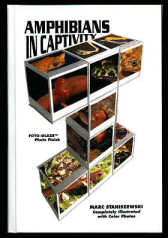P
paris
Guest
if anyone is paying attention-they will know that this section hardly ever gets posts, admittedly these sals are limited to most due to lack of access (not lack of making great pets). true- some sections-like the giant sal section that combines sirens with hellbenders and mudpuppies- have more posts because they contain more species, but still......
sooo....i am wondering just how many in our audience here at caudata.org keep these beauties? i myself have 2 Dicamptodon ensatus (if anyone out there has a spare female let me know-i very well cant breed them with just 2 males!)- i know of only 2 people but i think they cant be THAT uncommon. anyone in europe keep them? how many people have the morphed varieties and how many have the neotenic ones? - anything unusual about keeping the neotenic ones -or are they as easy to keep as most neotenic sals-like mudpuppies?
sooo....i am wondering just how many in our audience here at caudata.org keep these beauties? i myself have 2 Dicamptodon ensatus (if anyone out there has a spare female let me know-i very well cant breed them with just 2 males!)- i know of only 2 people but i think they cant be THAT uncommon. anyone in europe keep them? how many people have the morphed varieties and how many have the neotenic ones? - anything unusual about keeping the neotenic ones -or are they as easy to keep as most neotenic sals-like mudpuppies?


